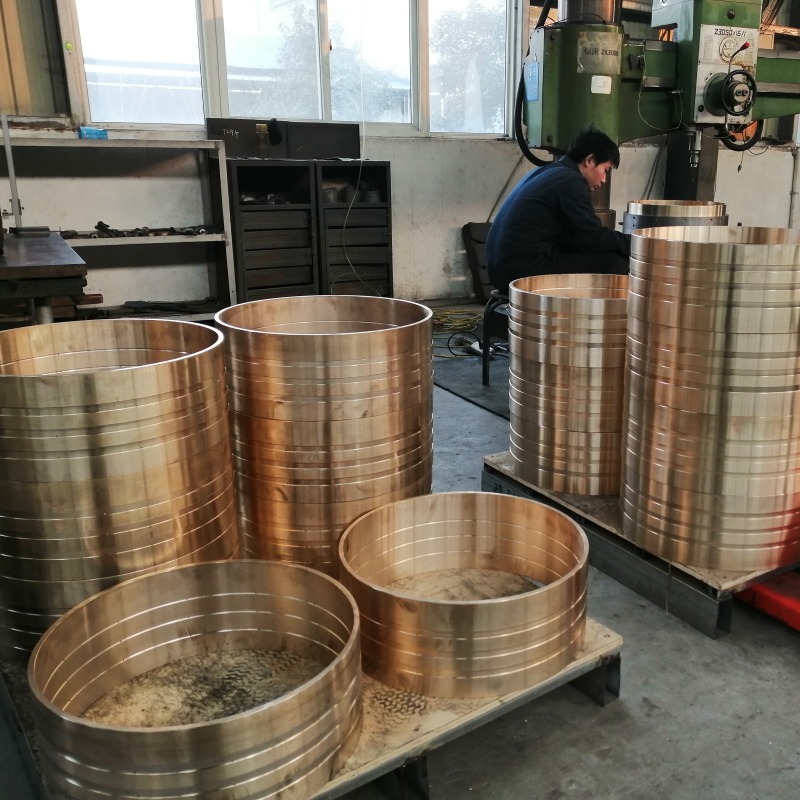
Home > News > Industry news > What is the difference between flanged copper sleeve and ordinary copper sleeve?
The difference between flanged copper sleeve and ordinary copper sleeve is mainly reflected in the structural design, installation methods and application occasions. The following are their specific differences:
1. structural design:
Flange copper sleeve: one end of the ordinary copper sleeve with a protruding flange (flange), the flange is equivalent to an additional support surface, increasing the force area and fixed function of the sleeve.
Ordinary copper sleeve: there is no flange, the whole sleeve is a cylindrical structure, only the inner hole and outer diameter, there is no additional support surface.
2. Installation method:
Flanged copper sleeve: Due to the presence of flange, the installation can be fixed by the flange end to prevent axial movement and simplify the installation process. In addition, the flange part can help to distribute the load and increase the stability of the sleeve.
Ordinary copper sleeve: without flange, it needs to rely on other parts or tight fit to fix the sleeve and prevent axial sliding.

3. Application:
Flange copper sleeve: usually used in the need to fix the position, prevent axial movement of the occasion, such as in the rotary movement of the need to accurately position the equipment, the flange can be used as a stopping part, play a stabilizing role. It is mostly used in some scenes that need to withstand axial force.
Ordinary copper sleeve: generally used for radial support of the shaft, suitable for occasions without significant axial load, or equipment that requires a simpler bearing structure.
4. Force distribution:
Flanged copper sleeve: Due to the additional contact area provided by the flange part, the force of flanged copper sleeve can be more evenly distributed, especially in the case of larger axial force performance is better.
Ordinary copper sleeve: good performance in the main radial force occasions, but due to the lack of flange design, the effect of axial fixation is weaker.
5. Maintenance and replacement:
Flanged copper bushings: the presence of flanges makes replacement and maintenance relatively simple, and it is easier to locate and fix them when disassembling and assembling.
Ordinary copper bushings: due to the lack of flange design, a more precise fit is required during installation, and additional fixing may be required during maintenance to prevent loosening or slipping.

Summary:
Flanged copper bushings are suitable for applications that need to withstand axial forces, stable positioning and easy installation.
Ordinary copper bushing is suitable for the occasion of bearing radial force and simpler structure.
The choice between the two depends on the design needs of the mechanical structure and the requirements of the use of the environment.
+86 17719955658
AddMazhuang Village, Yuhe Town, Huixian City, Xinxiang City, Henan Province, China
E-maildora@hsjxchina.com
Copyright @ 2024 Haishan Bronze Casting No:84463
Copyright @ 2024 Haishan Bronze Casting
Copyright @ 2024 Haishan Bronze Casting